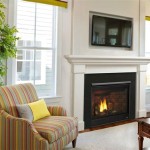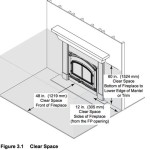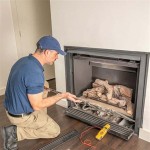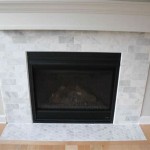The Enduring Appeal of Wooden Beam Fireplace Surrounds
Fireplaces have served as focal points within homes for centuries, providing warmth, light, and a gathering place for families. While fireplace designs have evolved over time, certain elements retain timeless appeal. One such element is the wooden beam fireplace surround. These surrounds, characterized by their robust appearance and natural materials, offer a unique blend of rusticity and elegance, making them a popular choice for homeowners seeking to enhance the aesthetic of their living spaces.
The allure of wooden beam fireplace surrounds stems from their ability to introduce natural textures and organic forms into interior design. Unlike manufactured materials, wood possesses inherent variations in grain, knots, and color, contributing to a visually dynamic and characterful surface. This natural variability ensures that each wooden beam surround is unique, lending an individual touch to the fireplace and the room it occupies. Furthermore, wood serves as a tangible connection to the outdoors, fostering a sense of tranquility and bringing elements of nature indoors.
Beyond their aesthetic qualities, wooden beam fireplace surrounds offer practical advantages. Wood, when properly treated, is a durable and long-lasting material, capable of withstanding the rigors of daily use. A well-constructed wooden beam surround, installed and maintained correctly, can provide decades of reliable service. The material also lends itself to a variety of design styles, ranging from rustic farmhouse to contemporary minimalism. The versatility of wood allows it to be adapted to complement diverse architectural settings and personal preferences.
The installation of a wooden beam fireplace surround is a process that requires careful consideration and attention to detail. It is crucial to ensure that the beam is appropriately sized for the fireplace opening and that it is securely mounted to the wall. Proper installation not only ensures the structural integrity of the surround but also contributes to the overall safety of the fireplace. Furthermore, the type of wood used, the finish applied, and the installation method employed all significantly impact the final appearance and performance of the surround.
Choosing the Right Wood Species
The selection of wood species is a critical factor in determining the appearance and performance of a wooden beam fireplace surround. Different wood species exhibit distinct characteristics in terms of color, grain pattern, density, and durability. Common choices for fireplace surrounds include oak, pine, cedar, and reclaimed wood. Each species offers unique aesthetic and functional properties.
Oak is a hardwood known for its strength, durability, and distinctive grain pattern. Oak beams bring a sense of traditional elegance to a fireplace surround. The wood is resistant to wear and tear, making it suitable for high-traffic areas. Oak is also receptive to a variety of stains and finishes, allowing homeowners to customize its appearance to match their décor.
Pine, a softwood, offers a more rustic and informal aesthetic. Pine beams are generally lighter in color and have a less pronounced grain pattern than oak. Pine is also more affordable than many hardwoods, making it a cost-effective option for homeowners on a budget. While pine is not as durable as oak, it can still provide years of reliable service with proper care and maintenance.
Cedar is prized for its natural resistance to insects and decay. Cedar beams possess a distinctive aroma and a warm, reddish-brown hue. Cedar is often used in outdoor applications, but it can also be used indoors to create a rustic and aromatic fireplace surround. The natural oils in cedar help to protect it from moisture and pests, making it a low-maintenance option.
Reclaimed wood, sourced from old barns, warehouses, and other structures, offers a unique and characterful aesthetic. Reclaimed wood beams often exhibit signs of age, such as nail holes, saw marks, and weathering. These imperfections add to the wood's charm and tell a story of its past. Reclaimed wood is also an environmentally friendly choice, as it repurposes existing materials and reduces the demand for newly harvested timber.
Design Considerations for Wooden Beam Surrounds
Beyond the choice of wood species, there are numerous design considerations that influence the overall aesthetic of a wooden beam fireplace surround. These considerations include the size and shape of the beam, its placement relative to the fireplace opening, and the style of finish applied. Careful attention to these details is essential for creating a visually appealing and harmonious fireplace.
The size and shape of the beam should be proportional to the size of the fireplace opening and the overall dimensions of the room. A beam that is too small may appear insignificant, while a beam that is too large may overwhelm the space. The length of the beam should also be considered, ensuring that it extends appropriately beyond the sides of the fireplace opening.
The placement of the beam relative to the fireplace opening can significantly impact the visual balance of the fireplace. A common approach is to center the beam horizontally above the opening. However, asymmetrical placements can also be effective, particularly in contemporary designs. The height of the beam above the opening is another important consideration. A higher placement can create a sense of grandeur, while a lower placement can create a more intimate atmosphere.
The style of finish applied to the beam can dramatically alter its appearance. A natural finish, such as a clear sealant or oil, allows the natural beauty of the wood to shine through. Stains can be used to enhance the wood's color or to create a more uniform appearance. Painted finishes can offer a more contemporary look, allowing the beam to blend seamlessly with the surrounding décor. The choice of finish should complement the overall style of the room and the personal preferences of the homeowner.
Installation and Maintenance of Wooden Beam Fireplace Surrounds
The proper installation and maintenance of a wooden beam fireplace surround are crucial for ensuring its longevity and safety. Installation involves securely mounting the beam to the wall, taking into account the weight of the beam and the structural integrity of the wall. Maintenance involves regular cleaning and inspection to prevent damage from moisture, insects, and fire.
Installation should be performed by a qualified professional with experience in carpentry and masonry. The beam should be securely attached to the wall using appropriate fasteners, such as lag bolts or anchors. The type of fasteners used will depend on the type of wall construction (e.g., drywall, brick, concrete). It is essential to ensure that the fasteners are strong enough to support the weight of the beam and that they are properly spaced to distribute the load evenly.
Maintenance of a wooden beam fireplace surround is relatively straightforward. Regular cleaning with a soft cloth and mild soap and water is typically sufficient to remove dust and grime. Avoid using harsh chemicals or abrasive cleaners, as these can damage the finish of the wood. Periodic inspection for signs of moisture damage, insect infestation, or fire damage is also recommended.
If the beam is exposed to excessive moisture, it may be necessary to apply a water-repellent sealant to protect it from rot and decay. If insects are present, it may be necessary to treat the wood with an insecticide. If the beam has been damaged by fire, it may be necessary to repair or replace it. Addressing these issues promptly can prevent further damage and extend the lifespan of the surround.
In conclusion, wooden beam fireplace surrounds represent a timeless and versatile design element that can enhance the aesthetic appeal and functionality of any living space. By carefully considering the choice of wood species, design considerations, and installation and maintenance practices, homeowners can create a unique and enduring fireplace that serves as a focal point for years to come. The natural beauty and inherent durability of wood, combined with thoughtful design and meticulous craftsmanship, contribute to the enduring appeal of wooden beam fireplace surrounds. The selection, installation, and maintenance of such a surround require careful consideration and adherence to best practices in order to ensure its longevity and safety.

Oak Beam Fireplace Surround Celtic Timber

Why Wooden Fireplace Mantels Are Simply The Best

Diy Wood Beam Mantel

Simple European Farmhouse Barn Beam Fireplace Mantel Makeover Open Doors Hearts

Beam Fireplaces Fire Surrounds Boston Heating

Wood Beam Mantel Shelf 48 72 Floating Fireplace

Distressed Poplar Beam Fireplace Mantel Wood Mantle Home Tile Surround

Rough Sawn Reclaimed Wood Faux Beam Mantels

Rustic Full Surround Mantel Made From 8 X Wood Beam Fireplace Shelf With Legs Real Pine Mantels Home Decor

Diy Wood Beam Mantel
Related Posts








